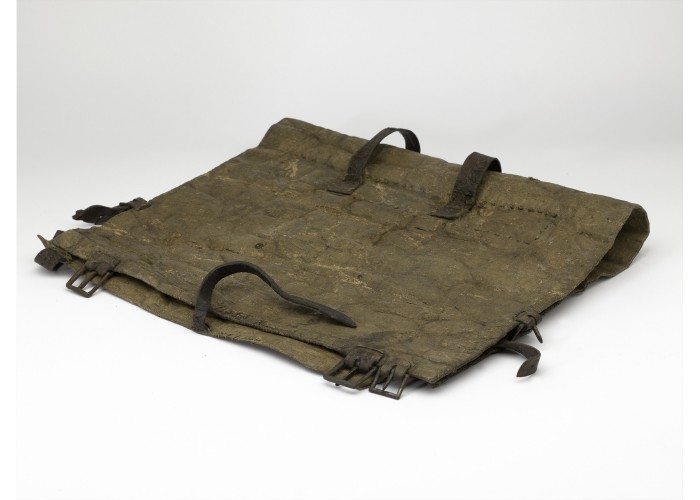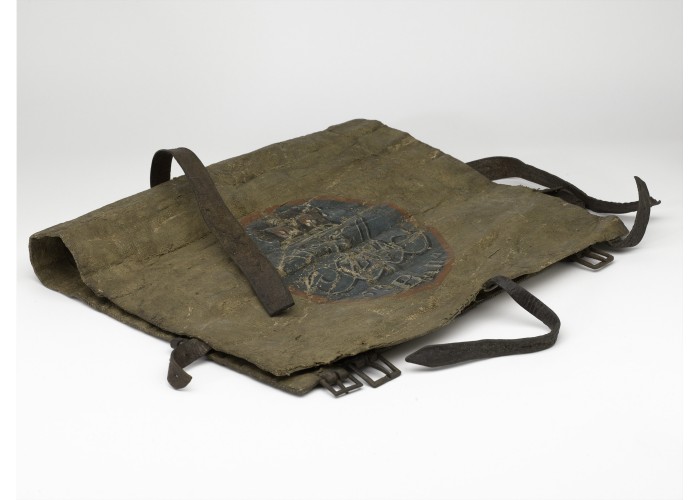Soldier’s Knapsack
A knapsack was amongst the 60-odd pounds (27kg) of equipment carried by British infantry at Waterloo. It was in these sacks, tied with leather straps, that the men carried their kit. This included items such as off-duty jacket, 2 shirts, spare shoes, 2 pairs of stockings, brushes, button stick, comb, pen, ink, black ball, pipe clay, and tent pegs.
The design of this piece of equipment changed over time. Until the introduction of the ‘Trotter’ knapsack, designed by Thomas Trotter of Soho Square in 1805, troops carried a canvas version on their backs, supported by straps (from 1790 to 1805). As in this example, the number of the regiment or volunteer unit to which the wearer belonged was inscribed on the flap of the knapsack. This example seems to display (not easily read) the graphics ‘RA’ and ‘5th Battalion’, suggesting the pack had belonged to a soldier of the 60th Rifles, originally named the ‘Royal American’ Regiment. The 5th Battalion featured prominently in the Peninsular campaigns (1808-14).
The design of the later and infamous Trotter pack was different. It was constructed of black lacquered canvas, reinforced with leather at the corners and fastened rather like a suitcase. Internally the pack was braced by wooden batons, which gave it a smart appearance, but made it uncomfortable to wear. The edges dug into the spine. The cross straps, which were buckled across the chest to join the shoulder straps together, caused constriction of breathing and sometimes resulted in ‘pack palsy’. This would occur when the shoulder straps dug hard into the armpit and resulted in nerve damage.
Both types of pack were used in the Napoleonic Wars. The canvas type was seen during the 1815 campaigns, worn by militia men who had recently joined line regiments.
-
Curatorial info
- Originating Museum: National Army Museum
- Accession Number: NAM. 1987-06-2
- Production Date: 1800
- Material: Leather, painted canvas, bronze
-
Use this image
You can download and use the high resolution image under a Creative Commons licence, for all non-commercial purposes, provided you attribute the copyright holder.
- Rights Holder: National Army Museum
- License Type: All Rights Reserved
Find it here
This object is in the collection of National Army Museum













